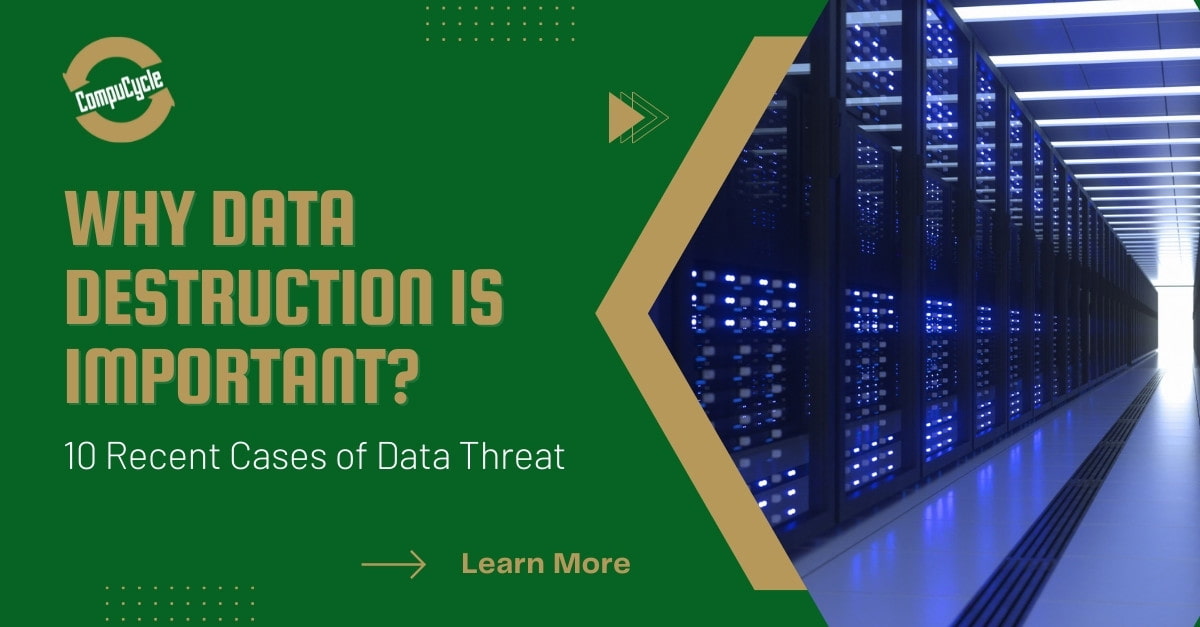The Importance of Effective Information Devastation Practices in Safeguarding Sensitive Info and Ensuring Computer System Safety
In an era where data violations are significantly common, the relevance of efficient data damage techniques can not be overstated. Organizations face substantial risks when sensitive details is improperly gotten rid of, potentially leading to unapproved access and extreme monetary effects. Carrying out robust data destruction approaches not just mitigates these dangers but also straightens with legal conformity needs, ensuring that organizations copyright their reputation and foster client trust. However, the question continues to be: what details strategies can be used to boost these techniques, and just how can companies effectively incorporate them right into their total cybersecurity structure?
Comprehending Information Damage
Understanding information devastation is critical in today's digital landscape, where delicate information can conveniently be compromised. Efficient information destruction includes not merely guaranteeing yet deleting data that information is irretrievable through detailed methods. This process is crucial for organizations that manage personal client details, intellectual property, or interior papers, as any kind of breach can result in serious economic and reputational consequences.
Data devastation incorporates various techniques, including shredding physical media, degaussing magnetic storage space tools, and using software-based solutions that overwrite data several times. Each approach offers a particular function and needs to straighten with the sensitivity of the info being gotten rid of. Physical destruction is typically preferred for tough drives having very personal information, while software techniques might be sufficient for much less sensitive info.
In addition, adhering to sector criteria and policies, such as the General Data Security Law (GDPR) or the Health Insurance Mobility and Liability Act (HIPAA), is necessary for conformity and to mitigate lawful threats. Organizations has to establish a durable information devastation plan, train staff members on finest methods, and on a regular basis investigate their treatments to make sure that all delicate info is disposed of firmly and successfully.
Threats of Inadequate Practices
Inadequate information damage methods expose companies to significant risks that can have far-ranging effects. When sensitive information is not appropriately disposed of, it stays vulnerable to unauthorized gain access to, which can lead to information breaches and identity theft. Such occurrences not just jeopardize the security of individuals but also stain the company's online reputation, causing a loss of consumer count on and potential economic repercussions.
Moreover, governing compliance is progressively rigid in numerous sectors. Failure to follow information damage guidelines can lead to hefty penalties and lawful activities versus organizations. These fines can draw away and stress economic sources focus from core organization procedures.
Additionally, the abuse of recurring data can bring about copyright theft or company reconnaissance, threatening affordable benefits (data destruction). The influence of poor information destruction expands past prompt financial losses; it can likewise cause long-term damage to brand name integrity and market position

Organizations need to identify that information protection is not entirely concerning preventing violations; it likewise encompasses the accountable monitoring of data throughout its lifecycle. Disregarding reliable information devastation methods can have catastrophic effects, underscoring the need for durable procedures to alleviate these dangers.
Best Practices for Data Damage
Implementing efficient information damage practices is essential for guarding sensitive info and keeping conformity with governing requirements. Organizations must adopt a multi-faceted approach to make certain that data is irretrievable, therefore preventing unauthorized gain access to and possible violations.
First, data must be classified based upon level of sensitivity, permitting companies to use ideal devastation methods tailored to the degree of danger. For electronic information, using software-based data-wiping devices that adhere to industry standards can successfully overwrite existing data. Physical devastation methods, such as shredding or degaussing, are crucial for tools that store delicate details, making sure complete obliteration.
Establishing a clear data retention policy is essential, describing how much time various kinds of details need to be maintained before destruction. Normal audits of data storage space systems are additionally necessary to recognize outdated or unneeded information requiring elimination.
Additionally, training staff members on the relevance of data damage and the specific protocols to comply with fosters a culture of safety and security within the company. Finally, maintaining documents of information devastation processes supplies liability and supports compliance with outside guidelines and internal plans. By adhering to these ideal techniques, organizations can considerably mitigate the dangers connected with information direct exposure.
Legal and Compliance Factors To Consider
Failure to follow these guidelines can cause severe charges, including considerable penalties and reputational damages. Organizations has to carry out a robust data devastation plan that straightens with these lawful frameworks and provides clear guidelines on the appropriate approaches of information disposal, whether physical shredding or electronic wiping.
Furthermore, preserving documentation of information destruction activities is necessary for showing compliance during audits or inspections. By focusing on legal and he said conformity considerations, companies can improve their data protection position and foster count on with stakeholders and clients, inevitably adding to a more safe data administration environment.
Benefits of Effective Data Devastation
Reliable information damage practices prolong beyond mere compliance; they provide significant benefits to organizations why not look here that prioritize them. By making sure that delicate details is irretrievably ruined, companies reduce the danger of information violations and the possible monetary repercussions connected with them. This proactive strategy not just safeguards against unapproved accessibility yet additionally enhances the overall reliability of the company in the eyes of stakeholders and customers.
Carrying out durable information damage approaches, such as physical damage of storage tools or sophisticated data cleaning methods, adds to the fortifying of an organization's cybersecurity position. data destruction. It decreases the likelihood of copyright burglary and secures proprietary details, thus keeping an one-upmanship in the market

Final Thought
To conclude, efficient information damage techniques are necessary for securing delicate details and boosting general computer security. By applying comprehensive methods such as shredding, software program, and degaussing overwriting, organizations can reduce the threats related to unauthorized gain access to and data violations. Adherence to regulative standards, including GDPR and HIPAA, additional strengthens compliance and safeguards against lawful consequences. Ultimately, a commitment to durable information damage strategies cultivates a society of obligation, therefore strengthening a company's cybersecurity stance and preserving client trust fund.
